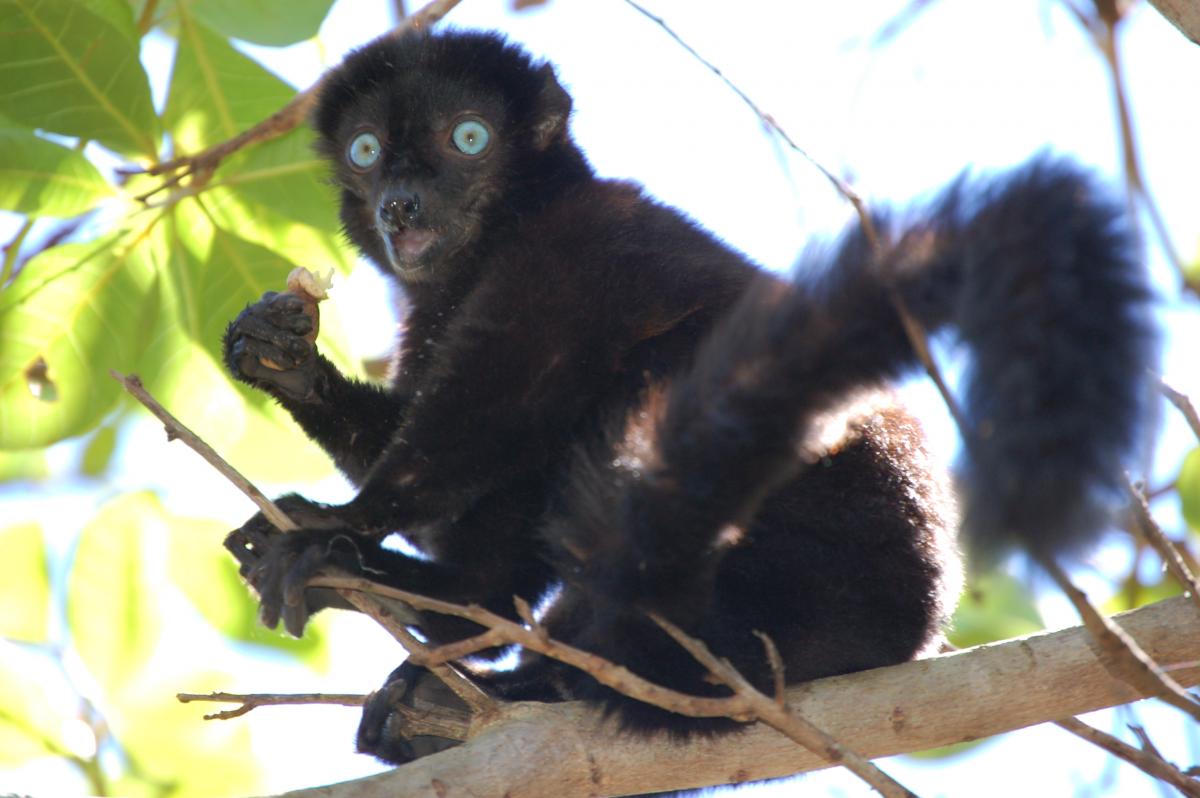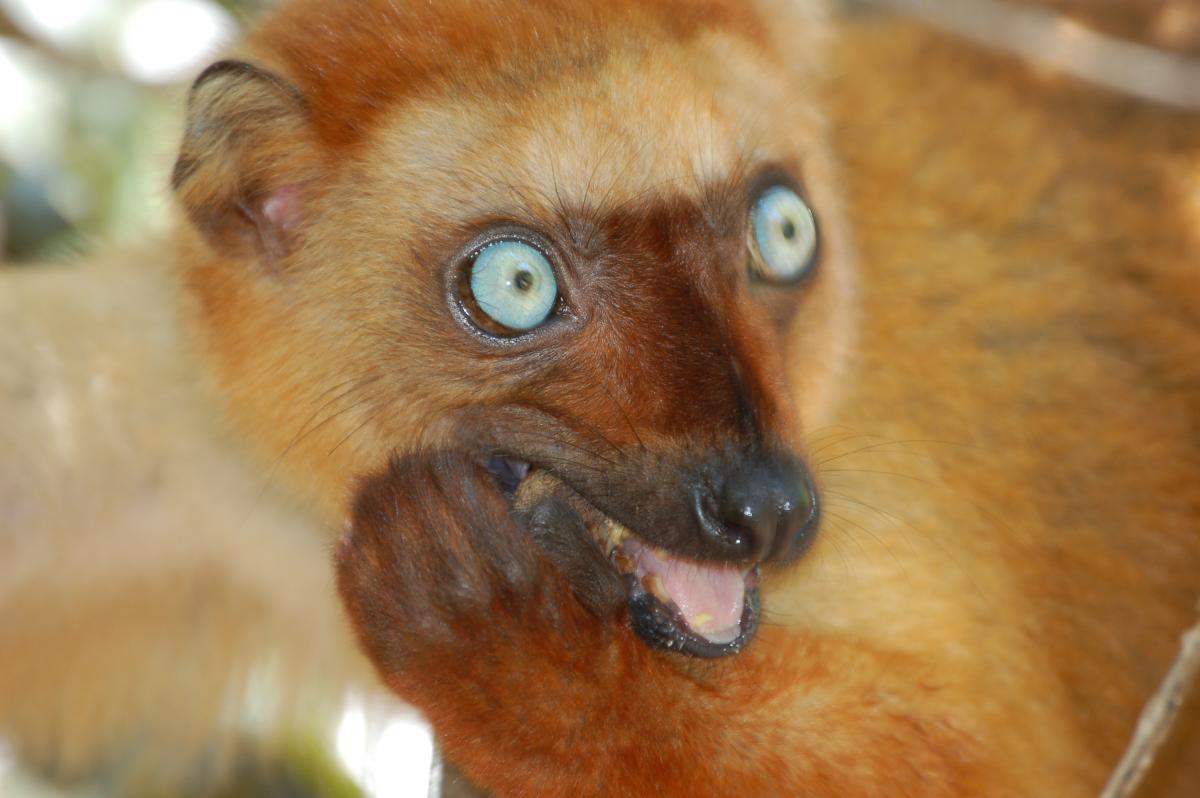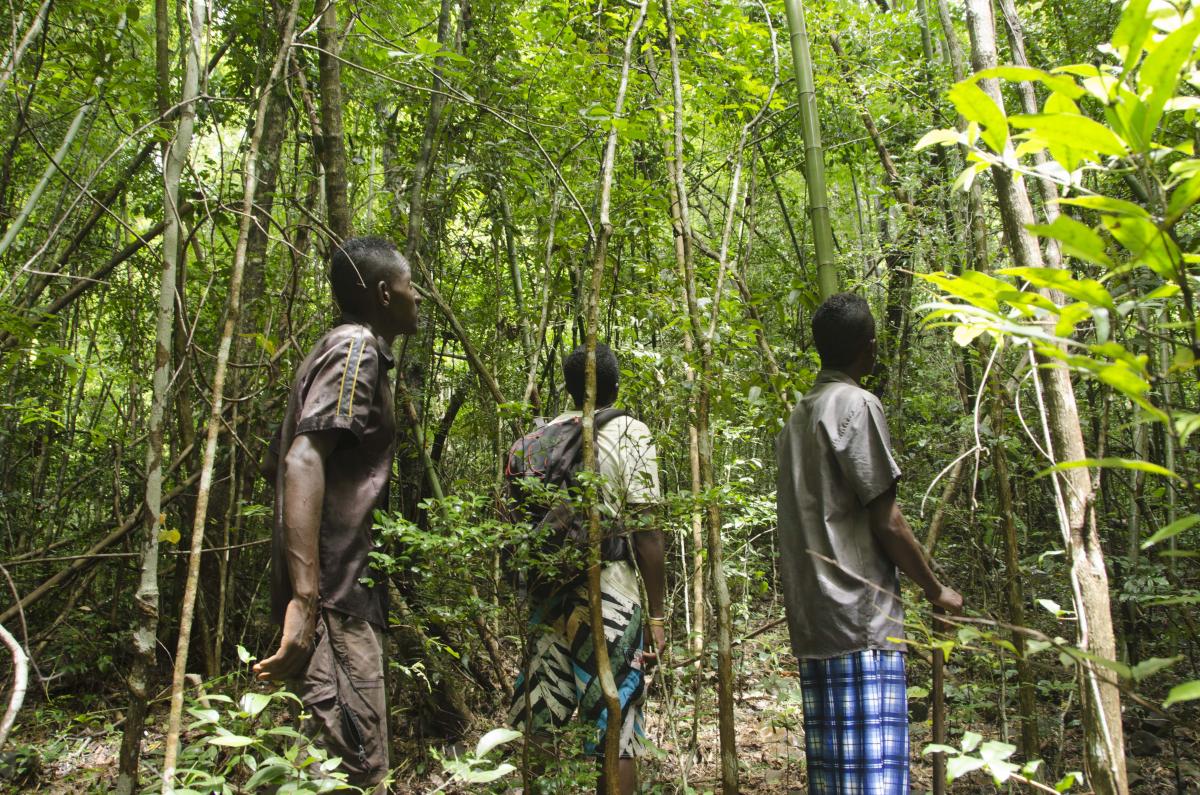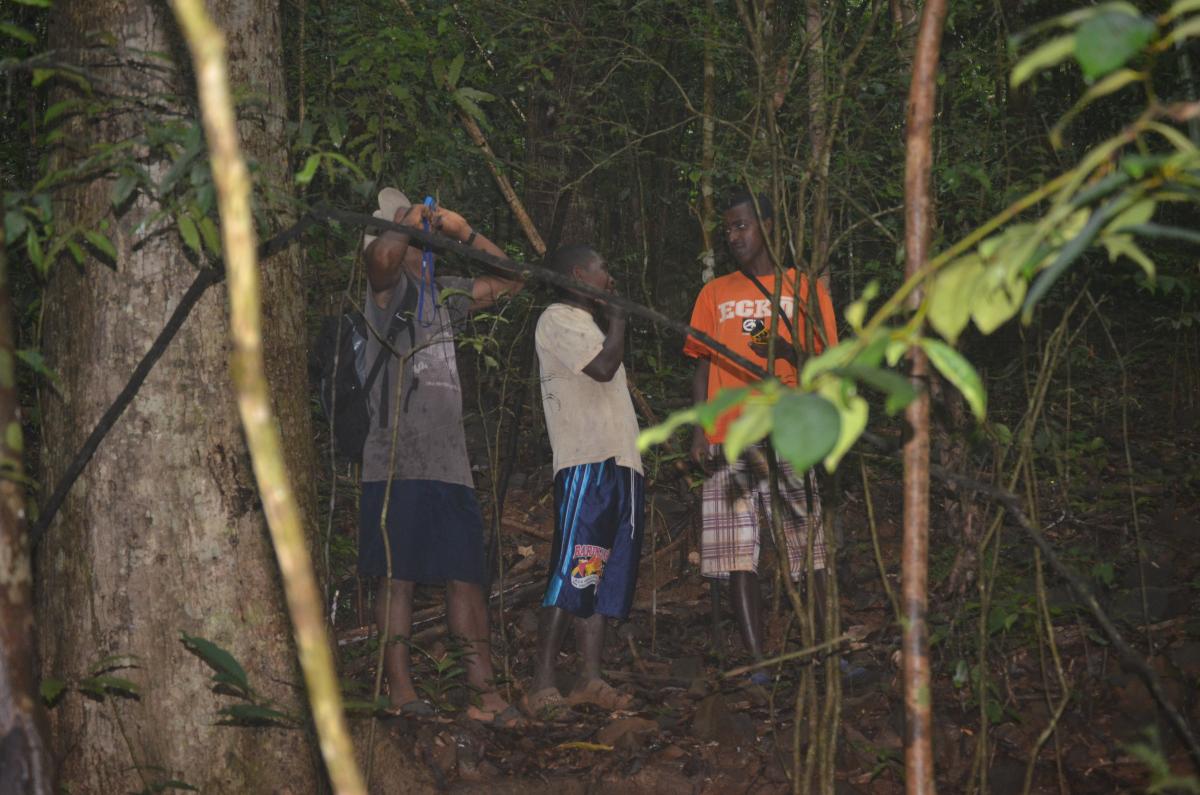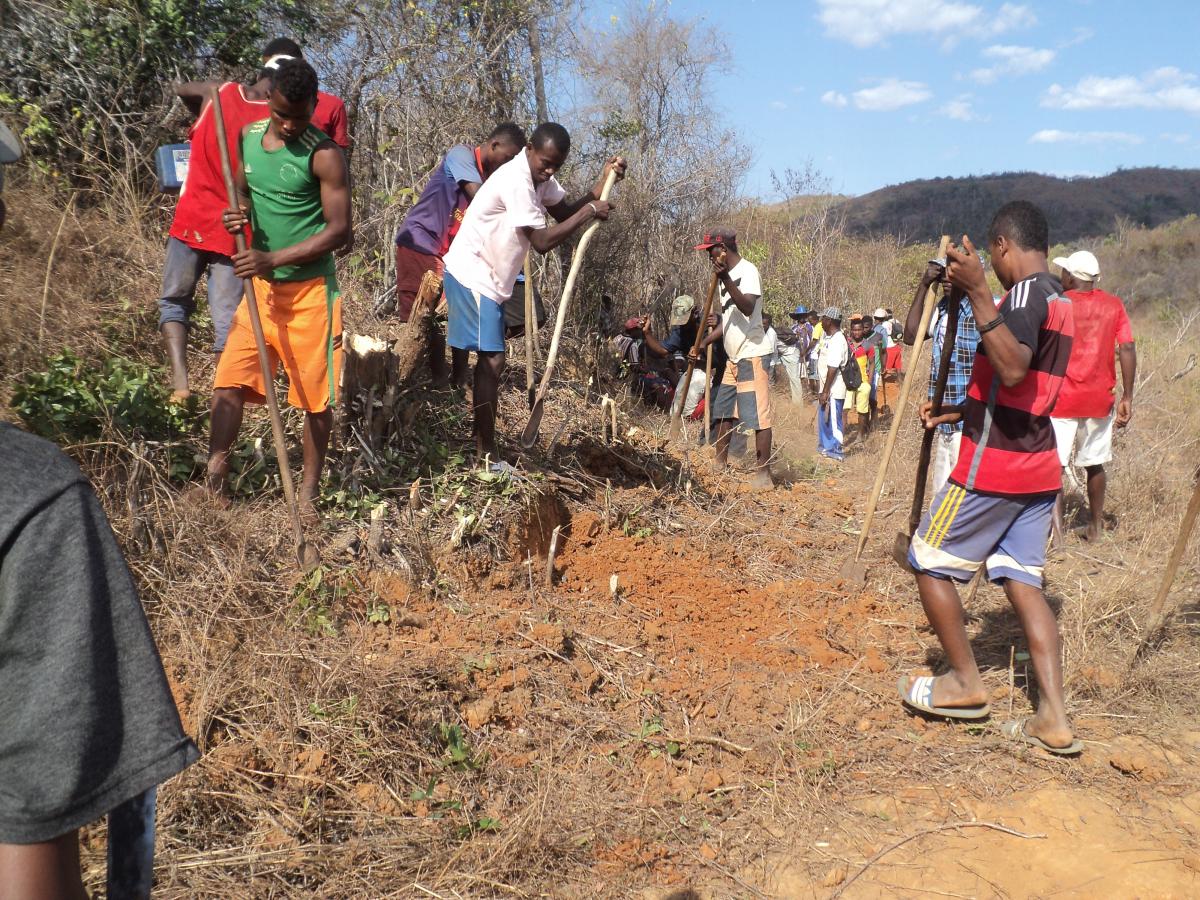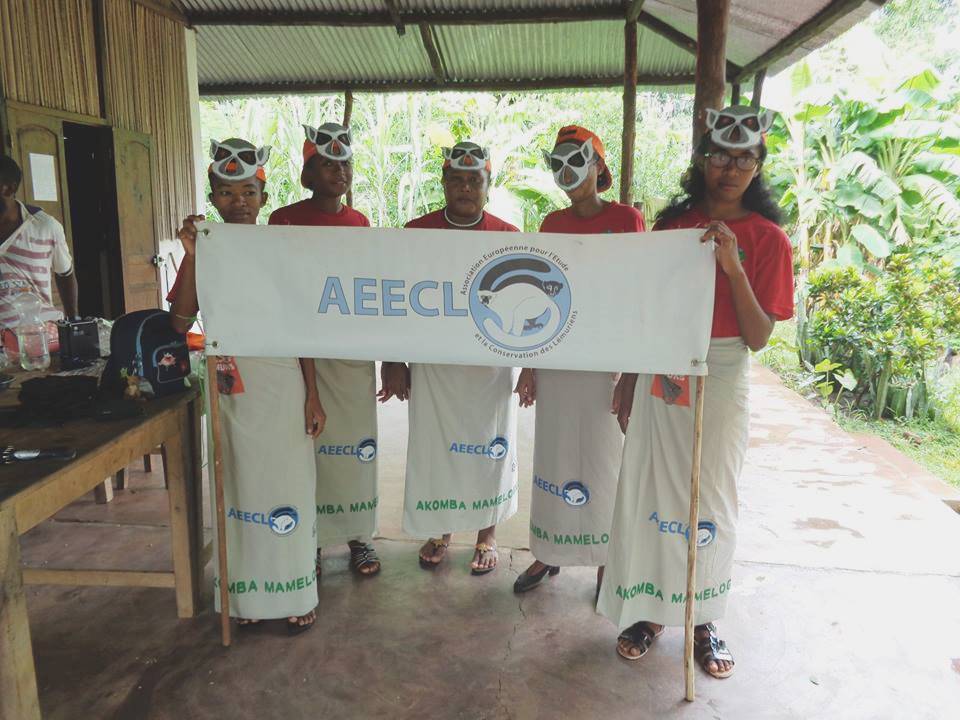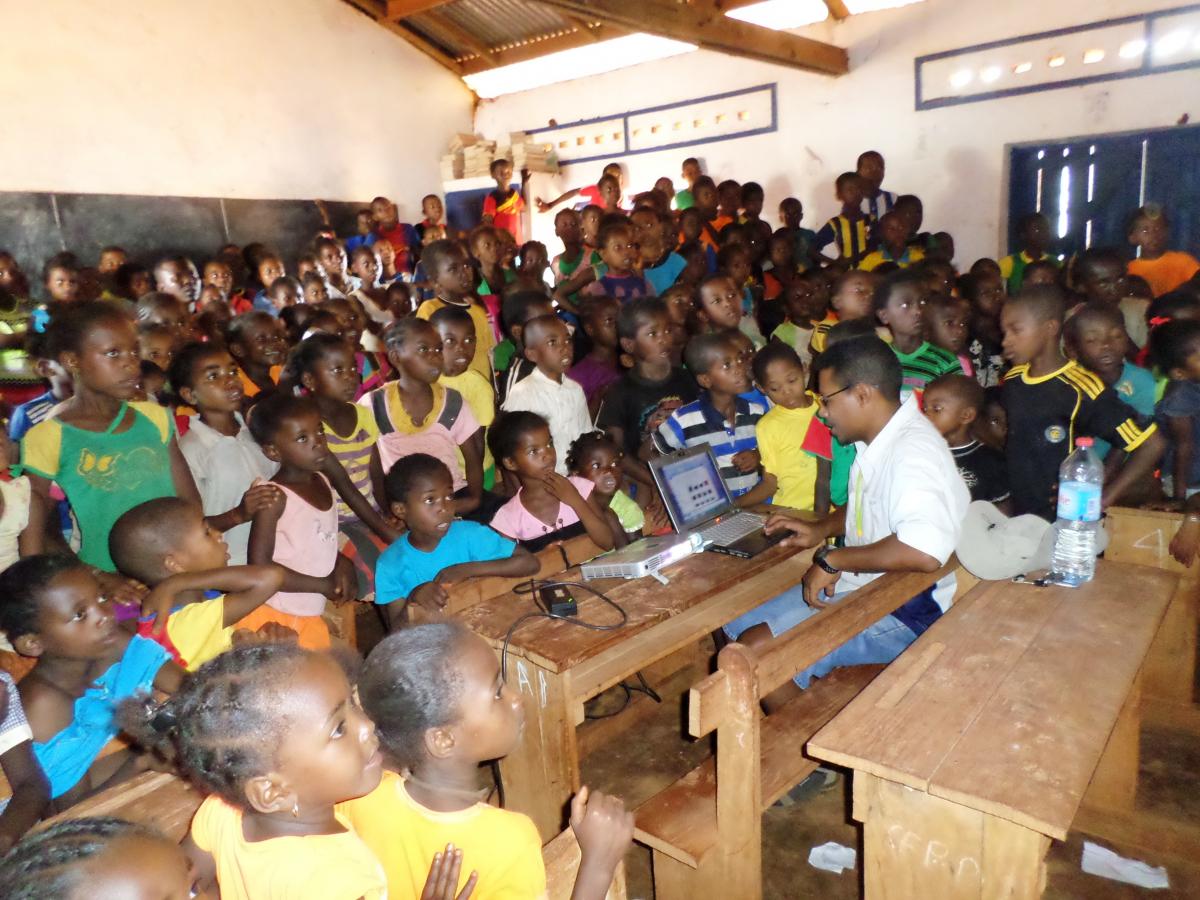Saving the Blue-eyed black lemurs of Sahamalaza Iles Radama National Park
When a fire spread into Anabohazo forest in Sahamalaza-Iles Radama National Park (SIRNP) in north-western Madagascar in late 2016 forest guides ran to alert their village communities.
Dozens of volunteers spent the next five days tackling the blaze and eventually extinguishing the flames. Representing 65% of the Critically Endangered Blue-eyed Black Lemur’s (Eulemur flavifrons) habitat, preserving Anabohazo forest intact was critical to the species’ survival prospects. Thanks to activities in a project implemented by The Association Européenne pour l’Etude et la Conservation des Lémuriens (AEECL), many local community members acted because they were keenly aware their own fortunes were intertwined with the roots of this old-growth forest explains Guy Randriatahina, director of AEECL.
Six months previously and supported by an SOS grant project work began in the area starting with community engagement through meetings with village elders. Their approval was fundamental to the project developing further and to gaining participation from locals. The overall idea was to replicate a model used in Ankarafa - another smaller forest fragment 30 kilometres away which is also part of SIRNP. There, the organization’s sustained presence in the forest manning a research station complemented by low-impact eco-tourism and supported by community outreach activities had helped preserve lemur populations from illegal activities as well as slash and burn agriculture and forest fires.
Initial progress was slow as villagers regarded the project team’s efforts with some skepticism, but once they could see the positive experiences of those who had volunteered early on as guides, then interest and support picked up momentum according to Guy. Following community approval, guides were recruited to monitor lemur populations and to help mark out future paths for tourists interested to make the two-day journey to this remote part of north-western Madagascar. Grant-funding was also provided to make the forest research station functional – it was already constructed prior to the SOS grant but not operational. Equipping the station and local guides with GPS devices, raincoats, walking boots, mattresses, sleeping bags and cooking materials turned it into a space to allow a continuous and vigilant presence in the forest through patrolling and monitoring.
Species monitoring activities were important - providing the first baseline for ongoing conservation efforts with Anabohazo’s Blue-eyed Black Lemur. It was not a job for just anyone however, requiring physical stamina and expert local knowledge of the terrain. Neither was it always easy to find lemurs. Ampilaza who was one of the first to volunteer as a guide, recalled how in the past Blue-eyed Black Lemur lived near his rice-field just two kilometres from the village. Nowadays he walks two hours to find lemurs in the forest. By the end of the project monitoring activities indicated there had been an increase in lemur numbers with one new group identified including three females and five males. What is more, all females that were monitored gave birth during the breeding season.
The planting of non-native fast-growing trees near to the village offered an alternative source of material for building houses and pirogues (dugout canoes) as well as firewood – all helping reduce deforestation. Meanwhile, education and outreach focused on celebrating the unique natural heritage of the area and encouraging community members to participate in development activities related to the eco-tourism component.
And this low-impact eco-tourism plan was developing well until the fire hit. The vision was that it would create jobs for the locals as guides, in producing crafts for sale, and providing food and board for visitors. Before the fire broke out the project team had established relations with tour agencies in larger towns in the region and even taken bookings for 13 tourists. Determined to deliver, Guy’s team made alternative arrangements to bring this group to Ankarafa instead where the group glimpsed this intriguing lemur - unique among primates, except for humans, in having blue eyes.
Reflecting on the overall success of the project to date and the response to the fire in Anabohazo, Guy observes “the sense of purpose through community involvement in the conservation activities helps ensure lasting benefits from the work”. The project’s ability to improvise and adapt to changing circumstances to serve its tourist clientele is a valuable experience. And with the signs that lemur numbers in Anabohazo are increasing, it seems that a managed presence in the forest can deliver positive results for this Critically Endangered species.
This story concerns just one of more than 250 threatened species supported by more than 100 projects in the SOS portfolio. Each one completed offers a wealth of practical lessons and insights into conservation action across numerous taxonomic groups and challenges. Explore the SOS interactive map and sign up for the SOS newsletter to keep up to date on further news from our grantees and visit the Lemurs Initiative page here to learn more.
